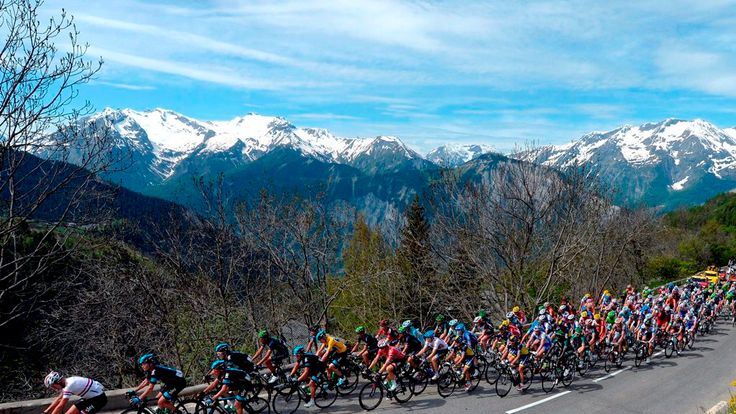The 100th edition of the Tour de France boasts one of the most mountainous and challenging routes in the race's recent history.
Mont Ventoux (stage 15)
Mont Ventoux is one of the most feared and mythical climbs in world cycling. Nicknamed the Giant of Provence, it surges out of a largely flat landscape and can be seen for miles around, its white-topped summit dominating the surroundings like a hill-top fort. It gained notoriety in 1967, when Britain's Tom Simpson died 1km from its summit during stage 13 of that year's race, and the monument that now stands on the spot where he perished is one of cycling's most iconic landmarks. The Tour returns to Ventoux after a four-year absence for a summit finish starting from Bedoin in the south, an
hors categorie ascent just shy of 21km long that averages 7.5 per cent in gradient, with a maximum of 12 per cent. There is more to Ventoux than just its topography, though, because its final 6km are played out in other-earthly conditions. Just after Chalet Reynard, the treeline is left behind and a moonscape of broken white rock takes over, reflecting the sun and turning the road into a furnace on clear days. The upper reaches are also battered by the
mistral wind common in this south-east corner of France, adding another test to an already humbling challenge.
Alpe d'Huez (stage 18)
Like Ventoux, Alpe d'Huez is one of the world's most iconic climbs. By winter it is a popular ski resort, but by summer, the steep and winding road that leads up to the hill-top town becomes to cycling what the Nurburgring and Le Mans are to motor racing. Its legend has been built on the dramatic and pivotal role it has played in the Tour de France down the decades and the race returns this year for its 28th and - significantly - its 29th visits. Race organisers ASO were keen to mark the 100th edition of the Tour in style and a key part of that was including two ascents of Alpe d'Huez in a single day. With the latter of those being a summit finish, it has the makings of a monumental and historic stage. The climb itself is
hors categorie, 13.2km long, averages 8.1 per cent in gradient (maximum 10.6 per cent) and winds its way up a dramatic valley side via 21 hairpin bends. The double ascent has the potential to create significant gaps in the general classification and could end up deciding the whole race.
Col du Glandon (stage 19)
The Col du Glandon may not be the steepest of Tour de France climbs, but it is one of the longest and, in this year's edition, it comes at a crucial time, just as both the race and a brutal final week are coming to a close and when legs will be withered from three weeks of hard pedalling. Riders will set off its slopes almost straight from the starting gun on a vicious 19th stage and will have 21.6km over an average gradient of 5.1 per cent to negotiate before reaching its summit. The Glandon is a classic Alpine climb, with tight hairpins and dramatic views, even passing by the idyllic Lac de Grand Maison near the top. The
hors-categorie test will not be a decisive factor in the race, but it could well plunge the riders with tired legs into serious difficulty ahead of a critical two days of the race.
Col de la Madeleine (stage 19)
No sooner have the riders tackled that Glandon, thoughts begin turning to the even harder Col de la Madeleine, which follows almost immediately on from its near neighbour. It is actually 2.4km shorter, at 19.2km, but the average gradient is a significantly more punishing 7.9 per cent. The Madeleine has become an integral part of the Tour since its first inclusion in 1969, appearing 24 times, and is set to play another crucial role in the race's 100th edition. Like the Glandon, it comes in the first half of stage 19, but it is rated as
hors categorie and represents a tough enough test to create gaps in the peloton and put pressure on those feeling the strain. For the fans, its snaking route and Alpine vistas offer a thrilling backdrop to the racing.
Annecy-Semnoz (stage 20)
Annecy-Semnoz is the final climb and third summit finish of the 2013 Tour de France, and while the destination of the yellow jersey could already have been decided by the time the riders arrive on its slopes, it will nevertheless provide a spectacular and potentially dramatic conclusion to the race's time in the Alps. Its summit looks down on the stunning Lake Annecy and offers views of snow-capped peaks in the distance, but enjoying the scenery comes at a cost in the form of a 10.7km ascent averaging 8.5 per cent in gradient. At the end of a three-week race, a brutal final week and with thoughts of sipping champagne on the way into Paris, Semnoz will provide the riders with one last chance to improve their positions on the general classification.
